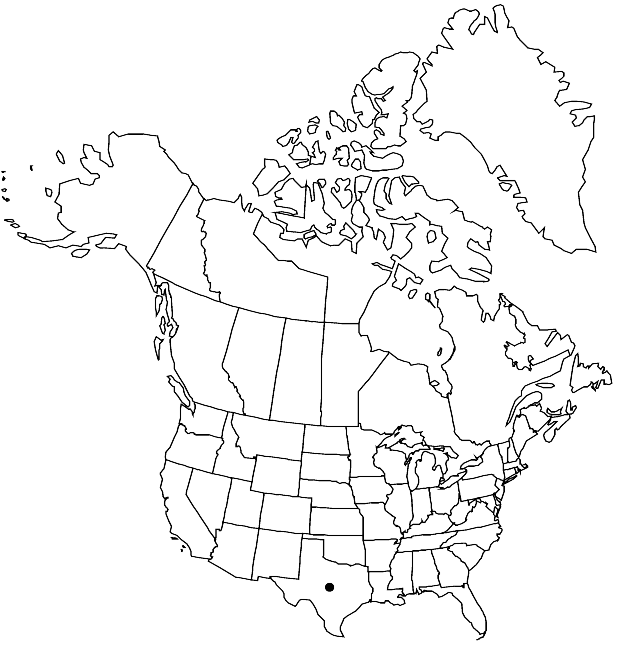Dryopetalon viereckii
Novon 17: 401. 2007.
Annuals; sparsely to densely hirsute proximally, sparsely pubescent distally. Stems erect or ascending, usually branched at or slightly distal to base, branched distally, rarely unbranched, (0.8–)2–5.5(–7.5) dm. Basal leaves: petiole (0.5–)1–5 cm; blade spatulate to obovate in outline, pinnatifid-runcinate, (1.5–)2.5–10(–15) cm × (10–)15–35(–52) mm, surfaces hirsute. Cauline leaves (median) sessile; blade base auriculate to amplexicaul, margins less divided than basal, dentate or entire distally. Racemes dense. Fruiting pedicels divaricate-ascending to horizontal, (3–)5–10(–14) mm (straight or slightly curved distally or proximally), sparsely pubescent. Flowers: sepals (1.7–)2–3 × 0.7–1 mm; petals white to lavender (sometimes with purplish veins), spatulate, (3–)4–5.5(–7) × 1.5–2.5(–3) mm, claw 1–1.5 mm, margins usually entire, sometimes repand, usually glabrous, rarely minutely papillate basally; filaments: median pairs 1.4–4 mm, lateral pair 1–2.5 mm, (rarely minutely papillate basally); anthers ovate, 0.5–0.7 mm. Fruits linear to linear-oblong, (1.5–)2–4(–4.7) cm × 2–3 mm; ovules 10–28 per ovary; style (0.5–)1.5–4 mm. Seeds 2–3 × 1.2–2 mm, narrowly winged. 2n = 28.
Phenology: Flowering Aug–Apr.
Habitat: Roadsides, thickets, limestone ridges, steep slopes, shady cliffs, arroyos, gravelly hillsides, canyon walls, open woods, desert shrubs
Elevation: 200-2200 m
Distribution

Tex., Mexico (Coahuila, Hidalgo, Nuevo León, Puebla, San Luis Potosí, Zacatecas).
Discussion
In the flora area, Dryopetalon viereckii is known from Cameron, Hidalgo, Jim Hogg, Kinney, La Salle, McMullen, Starr, Webb, and Zapata counties. It is highly variable in its leaf, fruit, style, pedicel, and petal lengths, density of indumentum, development of auricles, and division of basal leaves. This variation, which is continuous, has been the basis for dividing the species into varieties.
Selected References
None.